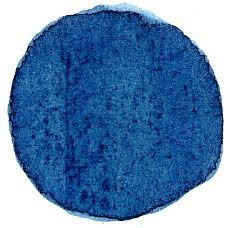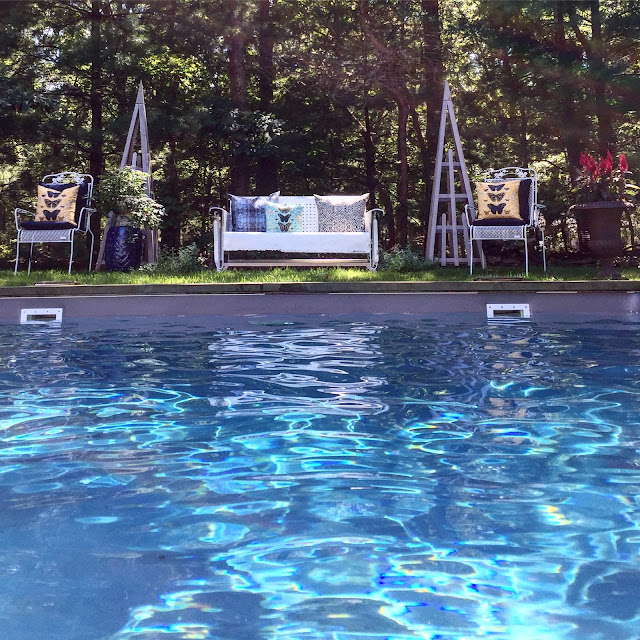Why In Design column: Our Love For The Color Indigo Heading Into 2017...
Why We Love Indigo Blue
the word is Greek meaning,
"from India"
I am happy to note that upon my return in January after attending Heimtextil (a German fabric show), then Maison Objet in Paris, I will give a full color trend report at the opening of New York City's first interior design show in 2017, NY Now. Please stay tuned for more details, and please mark your calendar for February 6, 2017. I will be speaking at the Jacob Javits Center to kick-off this home and design show by sharing color inspirations gleaned for 2017.
Indigo on the runway Amanda Wakeley show, London, 2016
Today, let me give you a sneak peek of one of my favorite colors, a specific version of blue called, indigo. It is important to note that I love all blues though, which over time has been associated as a happy color, a healing color, the color of life. And, we all would probably agree in the world today, we can use a lot more "happy". Blue lives in the color wheel between violet and green, and it feels soothing. It represents both the sea and sky, and humans perceive it when seeing light. Indigo is a tad closer to violet on the wheel and blending the "happy" of blue with the moody and exotic. Today, it is seen and easily identifiable as the color of blue jeans. Indigo has been a part of my favorite color choices for over two decades. It's a color that promised the exotic world, a more mysterious hue than it's preppy cousin, navy. Indigo feels different, more natural. And, maybe that is because it is a natural pigment originally derived from plants. It's dark and cool, and originally extracted from the indigofera plant, which grows in the topical part of the world, it is also referred to as "true indigo". It is a flowering plant from the bean family.
photo source: ethical fashion forum
To me, it is the most beautiful of neutrals and works well with almost every other color in the rainbow, and even looks fantastic when paired with black. It feels sophisticated yet holds a bit of patina, the perfect color really. It just feels right for almost every interior I can imagine both country and city both casual and formal. We love it so much over at our home product company, root cellar designs, that we created our very first wallpaper collection this fall.
root cellar designs' Black & Blue wallpaper collection
Let's take a look at Indigo, and break it down to it's medicinal historical and psychological properties...being a deep blue with a touch of violet (well, red really that gives it a slight violet feel), it gives off a feeling of great power.
a little bit of Indigo history:
The ancient Egyptians were enamored with blue, and allegedly wove blue stripes into the mummy cloths. According to Wikipedia, Indigo was first processed over 5,000 years ago in India, and when they first brought this rare color to the world. Taken from the genus Indigorfera plant, the plant originally grew in Asia and Africa, and later a slightly different variation in Japan. (the Japanese Ryukyu islands and Taiwan). It also grew in Central and South America and eventually in Europe as well when the European traders arrived in India during the 1500s, and found indigo one of the most coveted wares to bring home. It was the most important dye in the world, and mostly because it is a colorfast dye and very resilient, and became the strongest hue associated with early textile making. To cultivate the pigment, the leaves are fermented, and the blue-hued liquid is oxidized with the blue solidifying in the bottom of a tub, then dried. By the 19th century vast amounts of indigo were produced by British-owned factories in India. Today, it is mostly produced synthetically, and the cotton yard is dyed this deep blue color.
But, by no means is indigo today only associated with foreign shores. I recently red this fantastic book--In Red, White and Blue Make Blue by Andrea Feeser which tells the history of the color in the States, and how it literally helped to become woven into our country's identity. Feeser goes on to explain how indigo became a key color in colonial South Carolina during the 18th Century with the surge of textile design in the United States.
Well, I hope this helps to instill in you a love for this color, because I do believe indigo is growing in popularity, both a classic and natural color choice, yet a hue on the rise as we collectively head into 2017.
Happy Nesting
XO Tamara
sources:















